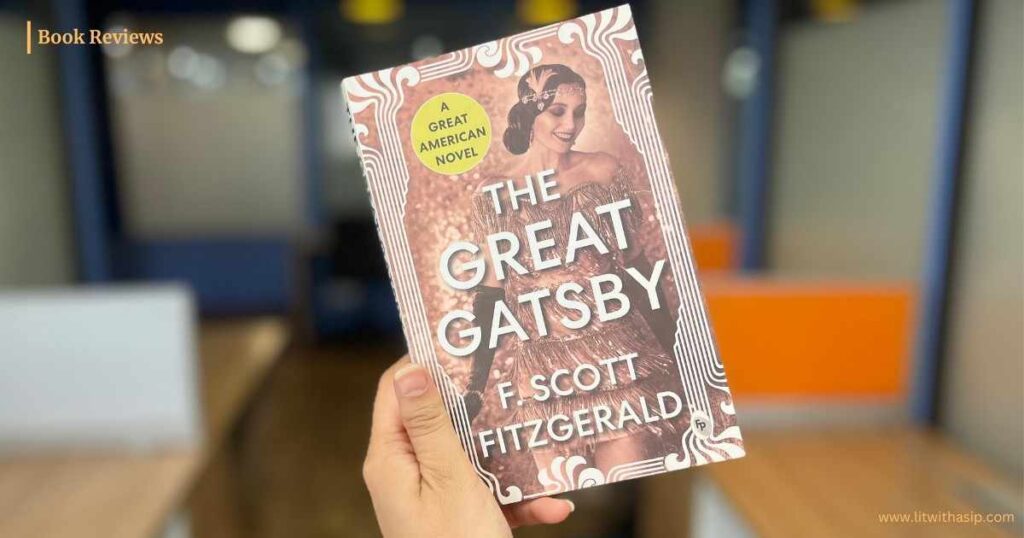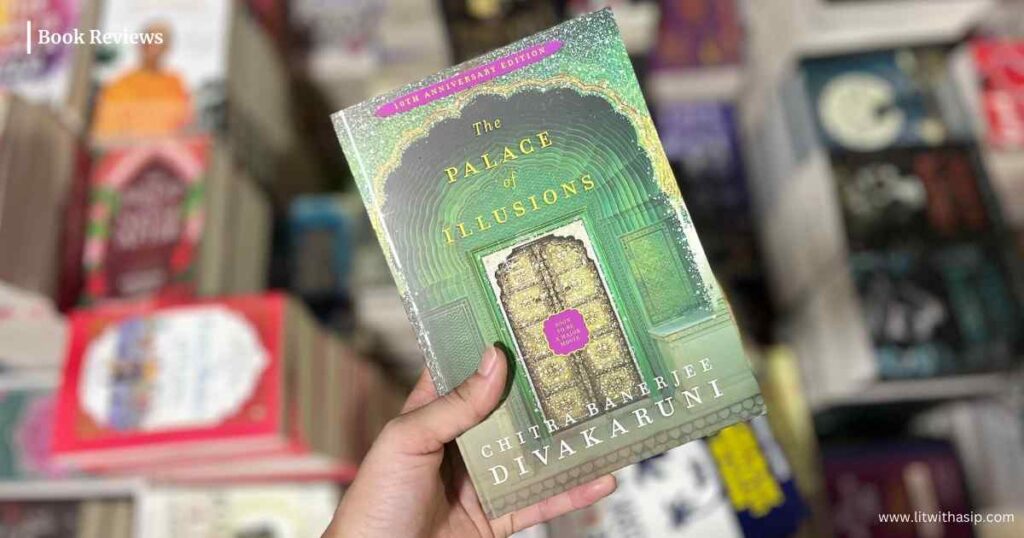
F. Scott Fitzgerald’s ‘The Great Gatsby’ is a 1925 American novel finding its setting in the roaring twenties of America- the Jazz Age. It is a remarkable attempt by Fitzgerald to mock the idealistic idea of the American Dream.
The book is renowned for being one of its kind, a classic that resonates with its readers to date. It has also been adapted into movies four times in the history of cinema, is included in the academic curriculum of ‘American Literature’, and is well recognized globally. Thin and engaging enough to finish in a few reads. The themes and narrative style of the book are what make it a worthwhile read.
Let us explore these dimensions one by one.
And please make sure you know that there are mild spoilers ahead…
So, What Is So Great About ‘The Great Gatsby’?
The Narrative
The narrative style is characterized by a first-person perspective, that is, by Nick Carraway. He is not only an observer but also a participant in the story. Nick, on his journey to establish himself in the ‘bond business’, closely encounters the life events of Jay Gatsby. The titular character, Jay Gatsby is a wealthy and mysterious man who throws grand parties and is secretly seeking love back from his old mistress, Daisy Buchanan.
Daisy, also a close cousin of Nick, is married to Tom Buchanan, a rich aristocrat positing his esteemed rank in society. The love triangle, especially viewed by Nick from Gatsby’s perspective, is a thrilling read, given the kind of complicated events it involves as the story progresses.
The novel consists of nine chapters. Each chapter delves into different aspects of the character’s lives, the social environment of the 1920s, and the unfolding drama surrounding Jay Gatsby’s pursuit of the American Dream and his love for Daisy Buchanan. The concise structure helps maintain a focused narrative.
Fitzgerald employs lyrical and poetic prose that captures the opulence and moral decay of the Jazz Age, blending vivid descriptions with a reflective, almost melancholic tone. For instance, the grand parties thrown by Gatsby might symbolize wealth and lavishness but have a hidden sense of void and meaninglessness underneath.
The characters are plentiful. Their interplay provides readers with a platform to understand the complex relationships between humans, coupled with differences in inherited class and wealth.
The novel’s narrative includes comic gestures to provide subtle social critiques and highlight the absurdities of the characters’ behaviors and the era’s decadence. This is exemplified in various instances, such as Tom Buchanan’s arrogant posturing and superficial bravado hint at irony, underscoring his ignorance and moral blindness.
The narrative is also marked by a sense of nostalgia and introspection, as Nick recounts events with a combination of admiration and critical distance, providing a deep and nuanced exploration of themes like the American Dream, social stratification, and unrequited love. This style invites readers to question the underlying realities of the characters’ lives and the era’s moral landscape.
The Themes
The novel’s thematic richness has won ample recognition. Some of the most major themes are the failure of the American Dream, the inverse proportion between humanity and class, the deceiving glamor of the Jazz Age, failure in love, and illusions surrounding hope. These themes altogether come to describe America in a way that underscores its moral ambiguities and societal contradictions, painting a portrait of a nation grappling with its ideals versus its realities.
Lionel Trilling, in his 1950 essay, praised the novel for its exploration of “a tragic pastoral America” where the character of Gatsby who is “divided between power and dream, comes inevitably to stand for America itself”.
Marius Bewley, in his 1954 essay, commented, “The Great Gatsby embodies a criticism of American experience” which is “not of manners, but of a basic historic attitude to life”.
T.S. Eliot wrote a letter to Fitzgerald praising the book and saying that according to him, it was “the first step that American fiction has taken since Henry James”.
The Symbolism
“The Great Gatsby” often refers to the green light at the end of Daisy’s dock. The first chapter of the novel closes with this image. It is quite picturesque and so is the message it gives. It serves as a ray of hope for Gatsby telling that one day he would eventually be able to have Daisy’s love. This symbolism reappears constantly throughout the novel. However, the result is nothing but void because Gatsby’s pursuit ends up unfulfilled.
Additionally, the places where the characters live include the West Egg (newly turned rich people like Nick and Gatsby), East Egg (the aristocrats like Tom, Daisy, and Jordan), and the Valley of the Ashes (people not that well-off like George and Myrtle). This very well symbolizes differences in class, wealth, lifestyle, power, and consequences.
The Tragedy
“The Great Gatsby” can be considered a modern-day tragedy wherein Gatsby embodies the traits of a tragic hero. He rises from humble beginnings to immense wealth, driven by his obsession for Daisy’s love and his desire to recapture an idealized past. Despite his success, Gatsby’s inner flaws, particularly his unwavering idealism and naivety, lead to his tragic downfall.
The story also critiques the moral decay beneath the surface of the glittering Jazz Age. Characters like Tom and Daisy Buchanan epitomize the carelessness and moral irresponsibility of the elite, contributing to the tragic events. Gatsby’s tragedy is not just personal but also a commentary on the broader social and moral failings of the era.
Gatsby’s pursuit isolates him from those around him. His lavish parties are filled with people who use him but do not genuinely care for him. But eventually, his end of the story is met with indifference by the very society he sought to impress, highlighting his profound loneliness and the emptiness of his achievements. For readers, this evokes catharsis, eliciting a reflection on the deeper truths about ambition, love, and the human condition in the modern world.
The Title
Gatsby has been called ‘great’ for some considerable reasons. Firstly, Gatsby dared to go out of his way and earn wealth believing in the trueness of the American Dream. The transition makes him change his identity from Gatz to Gatsby, even though the ways he opts to do so aren’t fully just.
Secondly and more importantly, Gatsby’s love for Daisy is what makes him great. Even though Daisy, morally decayed as reflected in her actions, did not earn this much love and consideration, Gatsby went on to praise her beyond what she was worthy of. His love for her made her appear beautiful. However, it was his greatness that led him to earn endless recognition as an amazing lover. Probably why Nick calls him “The Great Gatsby”.

Jennis Jacob, a passionate literary enthusiast in her 20s, is a writer and poet. With eight years of experience in literature, she is currently a master in English and finds inspiration in Womanist, American, and Indian Partition Literatures. Her works have appeared in anthologies such as ‘Carved Words Of Creative Minds’ and ‘100 Splendid Voices,’ and she is working on upcoming books. Through LitWithASip, she aims to ignite a love for literature and empower individuals to embrace their true selves.


Very interesting topic, appreciate it for posting.